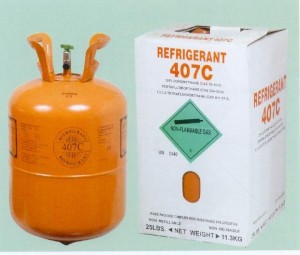HVAC improved by effects from emissions standards and ban on R-22
 One year from now two significant EPA regulatory statutes will be in affect for bus operators — the 2010 engine emissions standards and the ban on R-22 refrigerant for use in new equipment.
One year from now two significant EPA regulatory statutes will be in affect for bus operators — the 2010 engine emissions standards and the ban on R-22 refrigerant for use in new equipment.
R-407C replaces R-22
As of January 1, 2010, R-22 refrigerant cannot be used in new air conditioning equipment, and according to Thermo King, Minneapolis, MN, the most logical choice is R-407C created specifically to replace R-22.
“We have known since 1992, this date was coming when the amended Montreal Protocol established a phase-out schedule for HCFCs,” says Steve Johnson, product manager at Thermo King. “In 1992 Thermo King was already testing R-22 replacements and chose to use R-407C.”
Considering certain segments of the bus industry would always require a high-performance refrigerant, Johnson says his company based its choice on the fact that the chemical producers said it would work as a direct replacement for R-22, and Thermo King performance testing proved successful.
“The transit air conditioning application in particular can benefit from the properties of R-407C as it did with R-22,” says Johnson. “With a need for high capacity at low RPMs, coupled with a need for efficient use of energy and quick recovery times from door openings, R-407C is ideally suited to transit applications.”
Efficiency
Since 1993, Thermo King has put R-407C to the test, and has proven more efficient than R-134a and equal to R-22 in performance.
“In heavy duty transit, a system equipped with R-407C is smaller, has 20-35 percent more capacity and requires less energy to operate,” says Johnson. We are confident in offering it to our customers.”
R-407C takes more horsepower from the engine when the engine is turning the compressor. However, R-407C provides more BTU per hour of cooling for each horsepower used.
Johnson says any meaningful comparison must consider on the same amount of cooling. For example: An R-134a system would use less fuel if it was only providing 65,000 BTU per hour when compared to an R-407C system that was delivering 90,000 BTU per hour at the same conditions. BR
HVAC move to the roof
The 2010 requirements also may affect the installation of Diesel Particulate Filters (DPFs) as well as the configuration and location of the HVAC unit. Steve Johnson, Thermo King large bus product manager, says this may reduce or eliminate the available space for traditional rear-mount HVACs. He says the logical place for the unit is on the roof, but with key differences between rear-mount and roof-mount systems.
“This is not a novel concept,” says Johnson. “Some U.S. transit properties already have experience with roof-mount HVAC, particularly on articulated buses where two cabins have to be cooled.”
The refrigerant, water lines and some harnesses have to be routed within the body of the bus to connect the roof-top unit to the compressor in the engine compartment. For installation of roof-mount systems, holes cut into the roof for the air openings mean sealing the HVAC unit is critical.
For the same capacity, the roof-mount unit is heavier due to the configuration of the coils and the addition of covers not needed on the rear-mount system.
Some roof-mount configurations have separate condenser and evaporator modules connected once they are on the roof; again, a process not required for rear-mounted units.
According to Johnson, roof-mount system has several advantages. The roof-mount configuration allows the operator to have a rear window. There are more opportunities to manage air distribution, weight distribution and noise because the location of the unit can be anywhere from the back to the front of the bus. He says traditional roof- and rear-mount systems are not the only options. Integrated solutions place the interconnected AC components in several area parts of the bus, or within the roof itself to eliminate the need for expensive covers.
